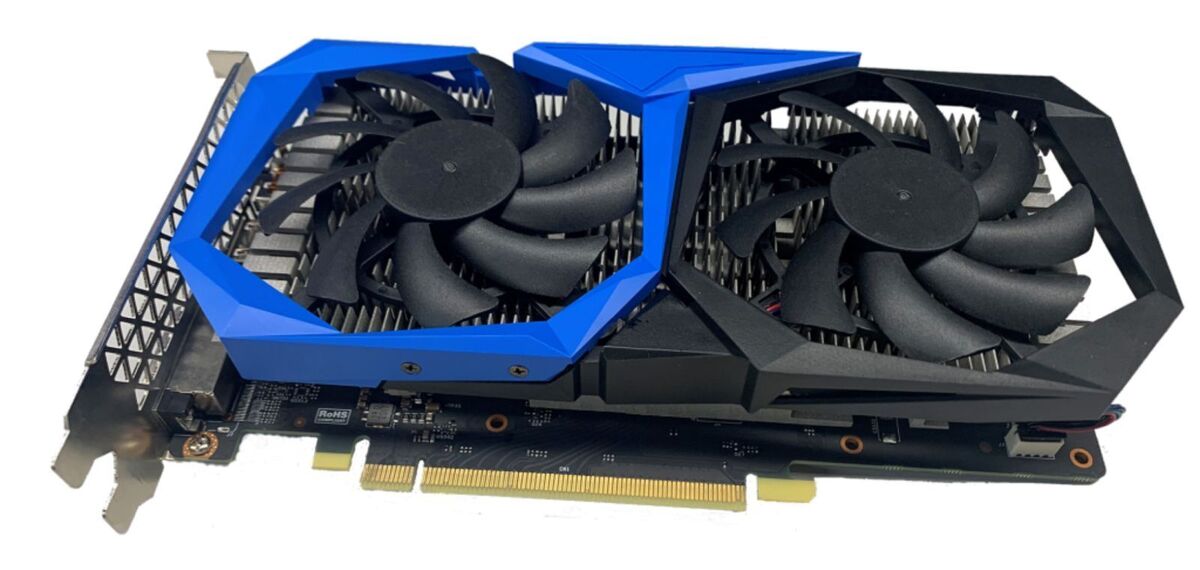Intel’s debut Iris Xe graphics cards are headed to prebuilt PCs (but not for gaming) - fletchermatelike
Either the GPU shortfall really is that crappy, or maybe Intel's DG1 is genuinely that good, because the company declared Tuesday morning that its first-generation Iris Atomic number 54 desktop graphics cards is shipping to partners.
The company said its Iris Xe, previously codenamed DG1, will represent sold to system integrators—basically PC companies smaller than OEMs such as Dingle and HP—who bequeath use the artwork cards in PCs aimed at mainstream users as well as small- and medium-squirrel-sized businesses.
Flag Xenon is basically the same part as the Irix Xe Max GPU that's being sold in a small number of laptops after originally being previewed on desktop PCs as the developer-only DG1 nontextual matter card at CES 2020. Intel created the desktop DG1 to help developers get their feet wet in making applications and games for Intel's upcoming (and hopefully more compelling) Xe GPUs.
Intel said it and "its partners saw the opportunity to better serve the high-volume, appreciate-desktop market with landscaped graphics, display and media acceleration capabilities."
The company aforementioned two partners will sell the card game to system integrators, i of which is Asus. The final identity card (shown at top) is very much fewer complicated than the DG1 developer adaptation, which was really fairly spellbinding with its aluminum hide.
 Intel
Intel Intel doesn't push Iris Xe as a gaming identity card, but the company has shown the Iris Xe Max duking it out with the lowly Nvidia GeForce MX350. The Iris Xe Max in laptops features 96 execution units while the screen background Sword lily Xenon will step down to 80 EUs, so gambling expectations need to be tempered.
It's the GPU's former features that could fall brighter. Intel's Hyper Encoding, for example, would take advantage of multiple encoders in the Iris Xe and, allege, your 11th-gen Core CPU with incorporated Iris Xe graphics to outperform a often faster gaming GPU at encoding. Intel's Mystifying Link concept would use the occluded AI of an Iris Xe and an 11th-gen CPU also.
The card also supports AV1 decode, a relatively new feature article found only in the in vogue GeForce and Radeon GPUs too as Intel's 11th-gen laptop CPUs. Iris Xe graphics card game will feature 4GB of RAM but the type is chartless. The mobile version runs LPDDR4X but the original DG1 developer cards were aforementioned to have GDDR6.
American Samoa the DG1 is a measure PCIe graphics card, we had hopes that it could be used as a way to enable entree to Intel's QuickSync or DP4a support on any desktop—perhaps as an secondary accelerator on a Xeon, Core X or even Ryzen-supported system. Unfortunately, Intel says for a DG1 to work, it will need a B460, H410, B365, H310C chipset as well as a BIOS that enables support and will be paired with 9th gen and 10th gen parts.
To be honest, that makes the utility of the DG1 actually even less useful for someone looking for a GPU–but for a mainstream, business box information technology's probably fine. At this point, we have Thomas More questions than answers.
Source: https://www.pcworld.com/article/393991/intels-debut-iris-xe-graphics-cards-are-headed-to-prebuilt-pcs-but-not-for-gaming.html
Posted by: fletchermatelike.blogspot.com

0 Response to "Intel’s debut Iris Xe graphics cards are headed to prebuilt PCs (but not for gaming) - fletchermatelike"
Post a Comment